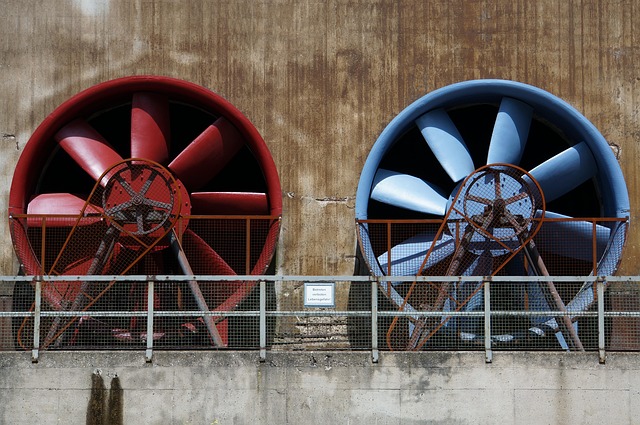Sick Building Syndrome (SBS) is linked to poor indoor air quality, particularly mold, which acts as a significant allergen. Mold thrives in humid, poorly ventilated spaces, leading to respiratory distress and exacerbating existing allergies. The mold impact on allergies can cause various symptoms like nasal congestion, headaches, and fatigue. Preventing SBS involves addressing moisture issues, regular inspections, proper ventilation, and using mold-inhibiting products to create healthier indoor environments.
“Uncovering the Hidden Threat: Does Mold Contribute to Sick Building Syndrome? This comprehensive guide delves into the intricate relationship between mold and indoor air quality, exploring its potential role in Sick Building Syndrome (SBS). With an emphasis on understanding SBS symptoms and the environmental factors that trigger them, we uncover how mold, particularly its impact on allergies and respiratory health, plays a significant part.
Learn about practical prevention strategies to mitigate mold-related issues and create healthier living spaces.”
- Understanding Sick Building Syndrome and Its Symptoms
- The Role of Mold in Indoor Environments
- How Mold Can Affect Allergies and Respiratory Health
- Prevention and Mitigation Strategies for Mold-Related Issues
Understanding Sick Building Syndrome and Its Symptoms

Sick Building Syndrome (SBS) refers to a range of symptoms experienced by occupants within a specific building, typically related to indoor air quality issues. It’s characterized by a variety of non-specific health problems that seem to be linked to time spent in a particular building. These symptoms can include respiratory distress, eye and throat irritation, headaches, fatigue, and skin rashes. Many cases of SBS are attributed to exposure to various indoor pollutants, including biological contaminants like mold.
Mold, known for its impact on allergies, plays a significant role in SBS. It thrives in environments with high humidity levels and limited ventilation, making indoor spaces prone to growth. When people inhale mold spores, it can trigger allergic reactions, exacerbating existing respiratory conditions or causing new health issues. Understanding the connection between mold and SBS is crucial for implementing effective strategies to mitigate these symptoms and ensure healthier indoor environments.
The Role of Mold in Indoor Environments

Mold plays a significant role in indoor environments, often hidden from plain sight but with a profound impact on air quality and human health. It thrives in dark, damp spaces, making indoor settings—especially those with water damage or poor ventilation—ideal habitats. The presence of mold can lead to a range of issues known as sick building syndrome (SBS), characterized by symptoms like respiratory problems, allergies, and general discomfort among occupants.
The impact of mold on allergies is well-documented. Certain types of molds produce allergens and mycotoxins that can trigger or exacerbate allergic reactions in susceptible individuals. These substances can be inhaled, leading to nasal congestion, sneezing, itching eyes, and even asthma attacks. Understanding the role of mold in indoor air quality is crucial for maintaining healthy living and working spaces, prompting proactive measures such as regular inspection, proper ventilation, and efficient moisture management.
How Mold Can Affect Allergies and Respiratory Health

Mold, a common yet often overlooked presence in our indoor environments, can significantly impact our health, particularly when it comes to allergies and respiratory conditions. The tiny spores released by mold serve as potential triggers for various allergic reactions. For individuals susceptible to allergies or existing respiratory issues, exposure to mold can exacerbate symptoms or even initiate new ones.
When mold grows within buildings, especially in damp and poorly ventilated areas, it releases its microscopic spores into the air. Inhaling these spores may lead to or worsen conditions like asthma, rhinitis, sinusitis, and other respiratory ailments. The impact on allergies is twofold; not only can mold itself be an allergen but it also promotes the growth of other allergens by providing a breeding ground for dust mites and bacteria. This interconnectedness further complicates the issue, as individuals with mold sensitivities may experience more severe and frequent allergic reactions.
Prevention and Mitigation Strategies for Mold-Related Issues

Preventing and mitigating mold-related issues within buildings is crucial, especially in efforts to combat Sick Building Syndrome (SBS). A comprehensive approach involves identifying and addressing moisture problems early on. Regular inspections, prompt repair of leaks, and proper ventilation are key strategies to minimize moisture accumulation, which molds thrive upon.
For areas prone to high humidity or water intrusion, implementing additional measures such as dehumidifiers, improving insulation, and using mold-inhibiting paints can significantly reduce mold growth. Regular cleaning and maintenance routines should include the use of non-toxic, mold-killing products, especially in spaces with known or potential moisture issues. Additionally, educating occupants about the importance of quick response to water leaks or high humidity and promoting good indoor air quality practices can further mitigate the impact of molds on allergies and overall health, thus contributing to a healthier environment and potentially reducing SBS symptoms.
